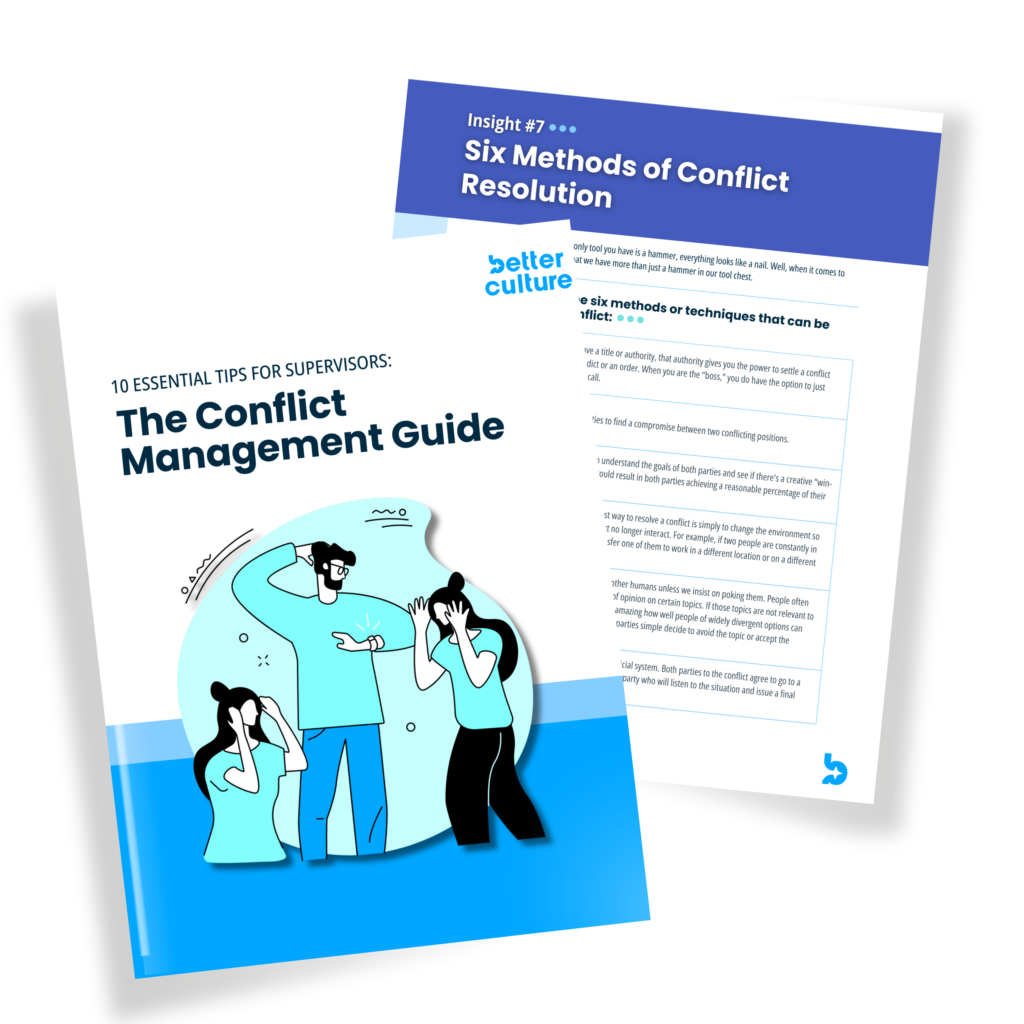“Soft skills” is an irredeemably bad term. It suggests something ambiguous, of short-lived in value, unprovable, and at its core: fluff.
When we talk about what it takes to build and maintain a healthy culture, it’s neither soft nor fluffy.
Accretive. Absolute. Predictable. Do these words suggest soft and fluffy? When we look at the process of building and protecting a great work culture, the skills, insights, and techniques that BetterCulture teaches generate absolute and predictable results.
There is no doubt about cause and effect – and that applies to both ends of the spectrum: generating great cultural health and creating a lousy work environment.
When you follow specific instructions in a recipe, there is no doubt about what the result will be. There is also no doubt what will happen if you leave out a key ingredient.
So it is with the work of building a better culture. We know – we absolutely know – what the result will be if you follow the right recipe; we also know how disappointing the outcome will be if you omit a key step or action.
A Mathematical Approach to Culture
Let’s talk about what it takes to develop a great culture, and let’s use unambiguous, crisp, direct terms. In fact, let’s approach it as would a mathematician or a chemist. We want to be able to show how specific steps will generate known outcomes, just like a chemist who has absolute assurance as to what will happen when they combine two known elements. BetterCulture can do that within the realms in which we operate: leadership and culture. We can show you exactly what it takes, step-by-step, to generate predictable outcomes. We can also show you what will go wrong with your recipe if you elect to omit one of the key ingredients. Below we lay out a foundational formula that any organization can use to estimate how effective their initiatives to build and enhance culture are likely to be. BetterCulture refers to this as the mathematics of culture. And again, this formula predicts your likelihood of making cultural progress – not the health of your current culture. Here are the variables that contribute to cultural health. Three are additive; one is a multiplier. In each category, allocate your company only the portion of the total points available based on the quality of your organization’s performance in that area.- 10 points: At the top leadership level, the members of the executive team who populate the C-suite have a clear and common vision of what it means to be a leader in the company. (E: Executive Team Common Vision)
- 25 points: The Company does a good job of selecting the right individuals for supervisory roles, and those front-line supervisors receive high quality leadership training to make the leadership principles of the company come to life for employees. The ambitious goal is to have all staff members report to an outstanding supervisor. (S: Supervisors)
- 15 points: At the highest level, front-line employees contribute energy and positivity into the organization and are essentially self-managing. At a slightly lower level, the Company holds all employees to solid standards of behavior and implements effective experiences and training designed to help all employees find more success at work and in life. (A: All Staff)
The Multiplier: A Culture Driver (CD)
A company can have great plans, but if not explained well and implemented effectively, their impact will be muted. A company can have leadership principles and cultural expectations beautifully written, but if not brought to life every day with the executive team down through every employee, the impact will be limited. To monitor cultural health and to effectively lead initiatives designed to enhance cultural health requires expertise and accountability. The best way to ensure that expertise and accountability is to identify one internal leader (a Culture Driver™) and see that they (a) possess the knowledge to build and protect culture, (b) have access to the right assessment and training tools, (c) know where to turn for support when needed, and (d) have the power that is necessary to be effective in the role of a Culture Driver. The following scale can be used to assign the Culture Driver value for the Culture Health Impact Score: 1.0: No single person assigned to monitor culture and drive initiatives 1.5 – 2.5: A person is assigned to monitor and drive culture initiatives, but lacks knowledge, tools, expert support, and/or power. 3.0: A competent Culture Driver monitors culture and orchestrates initiatives across all levels of the organization and has the necessary knowledge, tools, support, and power to do so. Bonus Points (BP): 5 points: The Company uses a good survey to get an accurate assessment of the current workplace culture. 5 points: When needed, the Company provides individualized coaching support to leaders and supervisors.The Formula
Culture Health Impact (CHI) Score: [(E+S+A) x CD] + BP = CHI
Max score before bonus additions is (10+25+15) x 3.0 = 150. With both bonus actions, the maximum CHI score is 160.
Notice that without a Culture Driver (CD), even including all the possible bonus points, the max CHI Score falls to 60 [(10+25+15) x 1.0 + 10 = 60)]. It increases to only 85 with a marginally capable CD who lacks significant knowledge, tools, support, or power and has a CD score of 1.5: (10+25+15) x 1.5 + 10 = 85.
The Implications
Many companies spend a considerable amount of time and money in pursuit of a better workplace culture. Unfortunately, many get a poor return on the investment of those two precious assets.
To be confident in making a significant and lasting impact on culture, you should have a CHI score ≥100. It’s ideal to shoot for a CHI ≥ 125.
These numbers are more than just numbers. The CHI score will accurately predict the impact of your actions; the higher your Cultural Health Impact score, the more positive impact your actions will have on your workplace culture and the greater your return will be on your investment of dollars and time.
When you lack a knowledgeable and supported Culture Driver, you can see the dramatic impact it has on your CHI Score. The numbers also show you just how much more powerful your initiatives will be when you do have a knowledgeable and supported Driver leading the charge.
So there it is: the formula for cultural health. How much time, energy, salary, and resources are you currently investing in maximizing your employee satisfaction and engagement? Could you be getting a bigger return on that investment? It adds up to a big impact on your ability to attract, build, motivate, and retain great people. The opportunity is right there – just do the math!



